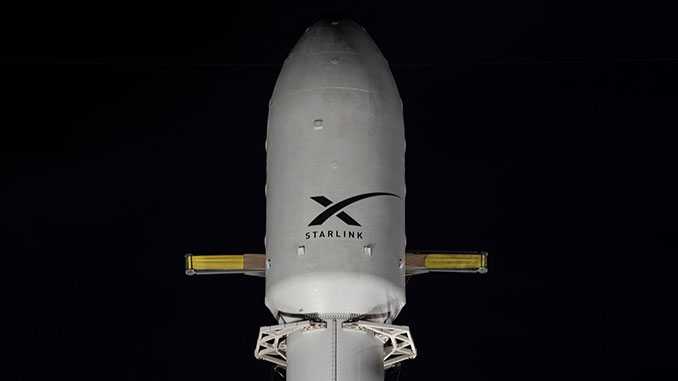
SpaceX is set to break its own record for number of orbital launches performed by one company, which it set at 96 in 2023. The Starlink 10-10 mission will put SpaceX at 97 orbital flights with two-and-a-half months still remaining in the year.
The Falcon 9 launch also marks SpaceX’s 100th total launch of 2024, including three suborbital launches of its Starship rocket from southern Texas. Liftoff is set for 1:34 a.m. EDT (0534 UTC) from Space Launch Complex 40 (SLC-40) at Cape Canaveral Space Force Station.
Spaceflight Now will have live coverage beginning about one hour prior to liftoff.
The Falcon 9 first stage booster supporting this mission, tail number B1080 in the SpaceX fleet, will launch for an 11th time. It previously launched two private astronaut missions to the International Space Station (Axiom-2 and Axiom-3), two Cargo Dragon missions to the ISS (NG-21 and CRS-30) and the Euclid space telescope for the European Space Agency (ESA).
A little more than eight minutes after liftoff, B1080 is set to touchdown on the SpaceX droneship, ‘A Shortfall of Gravitas.’ If successful, this will be the 81st booster landing for ASOG and the 353rd booster landing to date.
Onboard the mission are 23 Starlink V2 Mini satellites. This will be the first launch of Starlink satellites since the upper stage anomaly occurred during the Crew-9 mission on Sept. 28. The last batch of Starlink satellites launched during the Starlink 9-8 mission on Sept. 25.
During the Crew-9 mission, after the Crew Dragon Freedom spacecraft separated from the upper stage, the Merlin Vacuum Engine fired for an additional 500 milliseconds during the deorbit burn, which caused the stage to move outside of its planned landing zone to burn up over the Pacific Ocean.
The issue was investigated by SpaceX in a mishap investigation overseen by the Federal Aviation Administration and checked by NASA in an independent review. Since the mishap, SpaceX successfully launched both a Falcon 9 rocket on the Hera asteroid mission for ESA and a Falcon Heavy rocket on the Europa Clipper mission for NASA.

